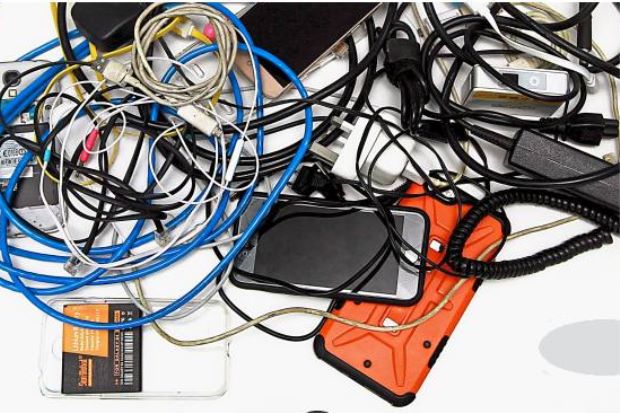PETALING JAYA — There are more than 66 million mobile phones in Malaysia – about twice the population, inclusive of immigrants.
This means Malaysians are sitting on millions of unused, obsolete handphones at home.
These, along with discarded tablets, thumb drives and other kinds of electronics, are posing a danger to the environment. While these gadgets must be properly disposed of, many just throw them into the dustbins, and they end up in landfills where the minerals and materials inside can leak out.
Malaysian Communications and Multimedia Commission (MCMC) head of technology development Badaruzzaman Mat Nor said most gadgets had an average lifespan of between 18 and 24 months.
“Millions of mobile phones are either lying at home unused or worse, in landfills after they are thrown away and the figure does not even include unregistered or ‘underwater’ mobile phones,” he told The Star.
There were about 65.7 million mobile phones in the Malaysian market up until 2014, a figure recorded by the industrial research and technology organization Sirim QAS.
While mobile e-waste refers to waste generated from SIM-based devices such as feature phones, smartphones, tablets and phablets along with its chargers and accessories, EcoKnights president and founder Yasmin Rasyid said e-waste on its own was a broad subject.
Yasmin said that it constituted waste other than mobile phones, such as thumb drives, gaming consoles and electronic gadgets of any kind.
“From laptops to desktops, household items like microwaves, TVs, monitors, printers, computer peripherals, VCRs/DVD players, gaming systems, MP3 players, scanners, fax machines and small scale servers are all e-waste,” she said.
The environmentalist added that electronics contain toxic materials such as lead, mercury, arsenic, cadmium and beryllium that must be properly managed to prevent soil and groundwater contamination.
A 2010 research on groundwater contamination at landfill sites in Selangor by two authors from National Hydraulic Research Institute of Malaysia (Nahrim) stated that there were 20 landfill sites in the state.
Seven are still operating and 13 were closed (at the time of research).
Only five landfill sites in the country are equipped with groundwater monitoring wells and the monitors showed higher than standard parameters for groundwater quality.
“This indicates that the groundwater within and surrounding the landfills are contaminated by the leachate.
“More than 70% of the landfills are located within 100m from streams or rivers,” the study said.
According to a paper by the United States Environmental Protection Agency, groundwater contamination could cause “poor drinking water quality, loss of water supply, degraded surface water systems, high cleanup costs, high costs for alternative water supplies, and/or potential health problems”.
Drinking water containing bacteria and viruses, the paper said, could result in illnesses such as hepatitis, cholera, or giardiasis, an infection of the intestine .
Water laced with lead has well-known serious effects on health including learning disabilities in children, nerve, kidney and liver problems as well as pregnancy risks while benzene, a component of gasoline, is a known human carcinogen.
“As technology continues to advance, so has the amount of e-waste being produced globally with nearly 41 million tonnes of electronics being tossed out each year.
“With the alarmingly large amount of this type of refuse, there is a problem over how it’s dealt with,” Yasmin said.
RELATED STORIES
E-waste needs more than recycling
Winning the war against electronic waste
E-waste law for Cebu City gains support
